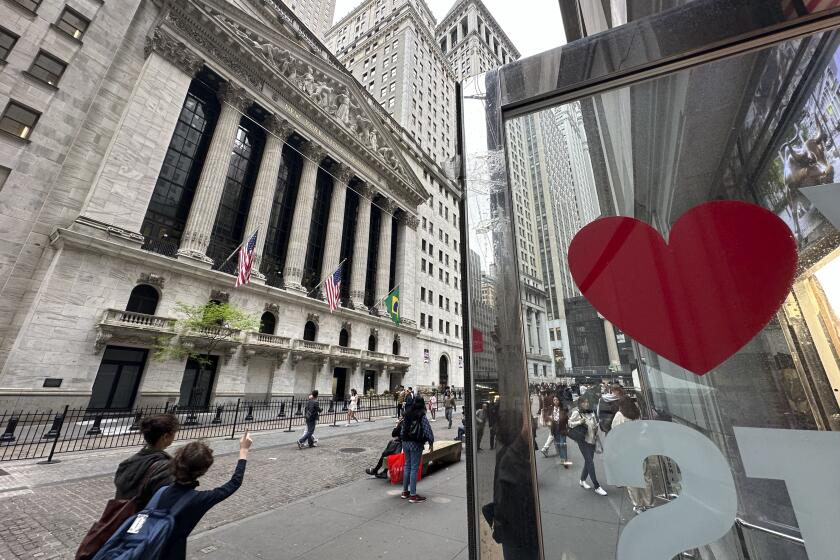From Welfare Rolls to Work Roles
For 24-year-old Carressa Taylor, a former welfare recipient, the last seven months have been a period of trial and triumph. And work--day after day of steady work, for the first time in her young life.
For Electrolyzing Corp., a Cleveland-based industrial plating firm, Taylor’s seven months of steady work is something of a triumph as well. In an industry plagued by high employee turnover, former welfare recipients like Taylor are looking more and more like workers who will stay awhile, driving down training costs and improving product quality as they do so.
Across the country, employers willing to hire welfare recipients are finding that this pool of 3 million workers may provide more stability than most business owners expected. Not only that, but welfare recipients appear to be staying longer at their entry-level jobs than do their non-welfare counterparts who walk into jobs off the streets.
That is the tentative and stereotype-shattering conclusion of a study to be released today at the White House, where President Clinton and a bipartisan business group, the Welfare-to-Work Partnership, will mark a year of exhorting often-reluctant employers to hire recipients off the rolls.
The study comes against the backdrop of a dispute that finds federal officials insisting that California pay minimum wage for government-sponsored welfare jobs. It has its echoes in the experience of large employers.
For United Airlines, one of the first and largest U.S. companies to commit to hiring welfare recipients, the retention rate among its new hires has sparked outright excitement. Of 760 welfare recipients hired for entry-level jobs since the spring of 1997, almost three-quarters are still with the company, United spokesman Tony Molinaro said. Among entry-level hires who did not come from the welfare rolls, fewer than half remain with the company a year after coming on.
For United Parcel Service, the shipping giant that has hired 10,400 employees off welfare rolls since January 1997, new hires from welfare have outlasted those off the street by as much as 15%. At its Philadelphia Air Hub, welfare recipients have a retention rate of almost 88%--well above the company’s retention rate for all new hires of 60% to 70%.
“They are really shattering the myths and stereotypes about former welfare recipients,” said Paula Fulford, a UPS spokeswoman. “When they get into the workplace, they are ready to work, ready to go, no different than other employees.”
Large employers like United and UPS--as well as smaller firms like Cleveland’s Electrolyzing Corp.--have taken advantage of training, job placement and counseling services provided by state social service agencies and nonprofit community organizations. And many companies have taken it a step further, devising company programs to help welfare recipients make the transition from welfare to work.
United Airlines, for instance, started a mentoring program in which more senior employees take new hires from the welfare rolls under their professional wings. The mentors lend the new employees a sympathetic ear and sometimes a helping hand when child-care problems arise or an argument with a supervisor threatens to break a new worker’s resolve to stay.
“You sort of have an instant ally and an instant friend,” said Molinaro, who added that United is so pleased with the mentoring program that it plans to extend it to all the company’s new hires. “These are folks who are desperate to do well and turn their lives back around and to really do a good job and move up in companies. They are twice as ambitious a lot of times, and that is really great for employers to see.”
At UPS’s Philadelphia Air Hub, the company has set up a “resource booth” staffed by state and nonprofit social service agencies to assist those making the transition from welfare to work with problems ranging from transportation to child care.
The company plans to establish such resource booths wherever it has substantial numbers of workers hired from the welfare rolls, Fulford said.
For Taylor, who has three sons under 7 and had never worked longer than a couple of months at one job, that mentor is her supervisor, who has made himself available for her. At one point, when child-care problems prompted a string of tardy arrivals, her supervisor negotiated a starting time 15 minutes later, putting the problem to rest and helping to foster a powerful bond of loyalty.
“I say to myself, they looked past what I’ve done in the past and gave me a chance,” said Taylor, who last November completed a two-week training course organized by the county social service agency and members of the local finishing industry.
“And most of us disappoint--they try to give us a chance to do something and we end up not making it through. So I’ve got to try harder, and I promise never to let them down.”
At the White House today, Clinton is expected to hold up programs like United’s mentoring initiative and UPS’s resource booths as the kinds of small investments that can make welfare reform work and save companies substantial sums lost to high employee turnover.
“You’ve go to think long-term,” said United’s Molinaro. “What we’re doing is spending a couple of pennies to save a lot of dollars. If you wound up training twice as many people, you end up spending a lot more in the long term. We feel it is cost-efficient.”







